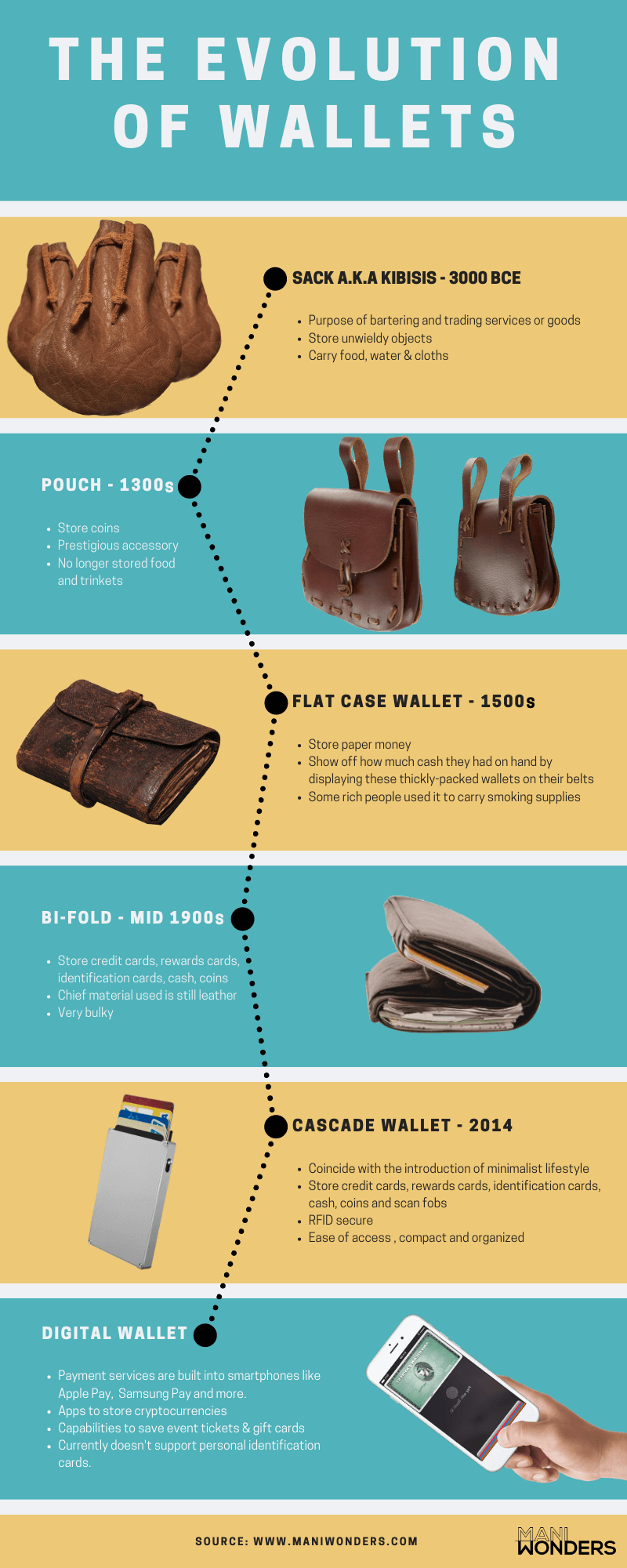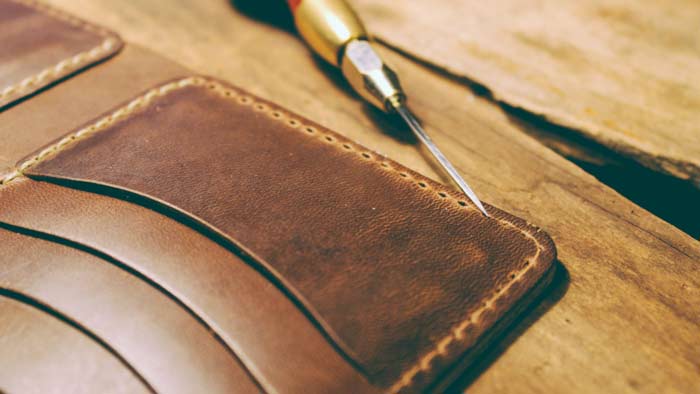
The History of the Men’s Wallet
The wallet we know today didn’t always look, feel, or even function like the way it does today. This long history dates back to ancient times, with the creation of coin porches and spams and changes through the centuries as paper money was introduced into society. Wallets or small leather goods have always been necessary since forever as the need to carry small items on us at any time has always been a requirement for human survival.
To this day wallets are the standing item everyone carries with them in some shape or form. From the traditional bi-fold to newer innovative smart wallets the range of wallets available and the innovation of brands across the world continue to shape and change what we’ve come to know about the trusty wallet. Let’s dig into what we know about the history of the men’s wallet.
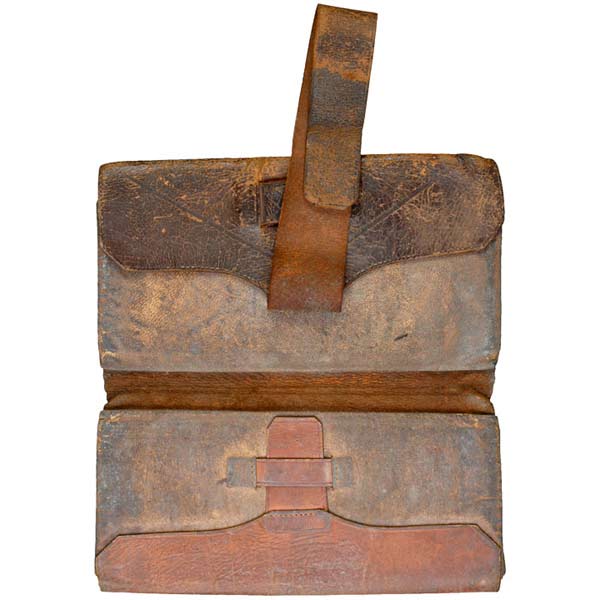
Define ‘Wallet’
The word “wallet” has been in use since the late 14th century to refer to a bag or a knapsack for carrying stuff. The word may derive from Proto-Germanic. The ancient Greek word kibisis, said to describe the sack carried by the god Hermes and the sack in which the mythical hero Perseus carried the severed head of the monster Medusa, has been typically translated as “wallet”. Usage of the term “wallet” in its modern meaning of “flat case for carrying paper currency” in American English dates to 1834 but this meaning was one of many in the 19th century and early 20th century.
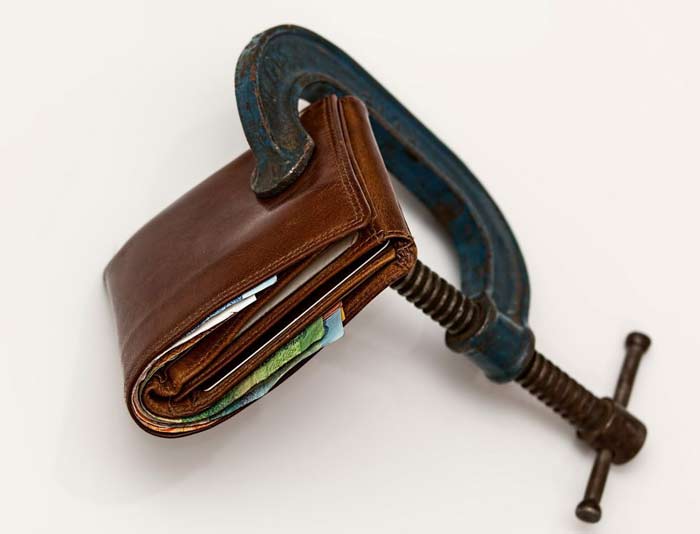
Wallets through Time
Wallets were invented in the late 1600s, almost immediately after paper currency was introduced. Paper currency was invented in Massachusetts in 1690. Prior to this, simple purses were used to carry around metal coins. These purses resembled small, drawstring bags. The first wallets were generally made from cow or horse leather and had one small pouch for where people would place their identification cards (know then as calling cards). The use of leather is still the most popular wallet material today but is slowly decreasing in popularity with the use of other materials such as metal, wood and elastic.
Through the 19th Century
From a cultural perspective, wallets would be considered fairly ‘uncivilized’ for the most part with wallets usually being attached to the belts to actively show off wealth and maintain status (although it sounds like a good way to get robbed).
Strangely enough in the early 19th century wallets were regularly used to carry meats among other items that were considered to be secret, treasures or simply not to be exposed to the elements. This was common in America at the time and was increasingly fashionable to carry your wallet on your belt. Unlike today in which a wallet would be carried in your pocket, this was considered highly uncivilized, uncommon and was to be avoided.
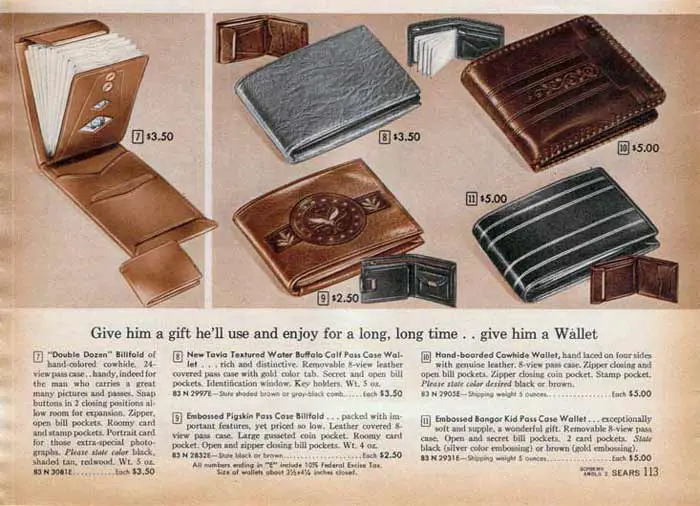
The Modern-Day Wallet
In the1920s, Hermes (at the time, a bridle and harness maker whose clients had primarily been horses) seized the opportunity to create fashionable leather goods for everyday life. These unique wallets (crafted from saddle leather) became our first modern style wallets.
Wartime was another period that popularised the use of leather wallets. Wallets were found on the battlefields of WW2 found containing dog tags, stamps, and photos of loved ones. It made sense to want to have something to keep possessions like this safe. The Postwar economic boom would also play a part in increasing the popularity of the men’s wallet as manufacturers of goods increased and more people had excess cash to spend.
The modern bi-fold wallet with multiple “card slots” that we all know and love became standardized in the early 1950s with the introduction of the first credit cards. Some innovations include the introduction of the velcro and zip wallet which is very popular and typically seems in kids’ wallets which first came about in the 1970s.
Currently, we seem to be going through a wallet revolution as the internet has provided a gateway for small independent designers, innovators and entrepreneurs alike to develop a range of unique wallets, which of course, are typically dubbed minimalist or slim wallets.

The End of the Wallet?
The question is whether the wallet will eventually die out? With society moving more towards wireless technology and mobile payment systems will the functionality and appeal of the wallet eventually fade out? We carry fewer cards and less cash so it definitely seems like a possibility in the near/distant future. Let me know what you think on the issue, I’m interested to know.
As the way we deal with money changes overtime its leaves the question of what will happen to the wallet as we know it today. We’re already seeing a rapid decrease in the size of the wallets we carry – mainly due to the fact as countries are moving towards more of a cashless society and the need to carry coins and banknotes is falling.
We must also talk about the increase and popularity of cryptocurrencies like Bitcoin. If this form of decentralized currency was to become the norm in our society then we’d have even less reason to carry wallets with us and the wallet as we know it could become a thing of the past. The infographic below is a great timeline that shows how the wallet has evolved over the years.
So what do you think about the men’s wallet? Is it here to stay? Or is it doomed into obscurity as technology advances and our need to carry physical goods demise? Let us know we’d love to hear from you.
